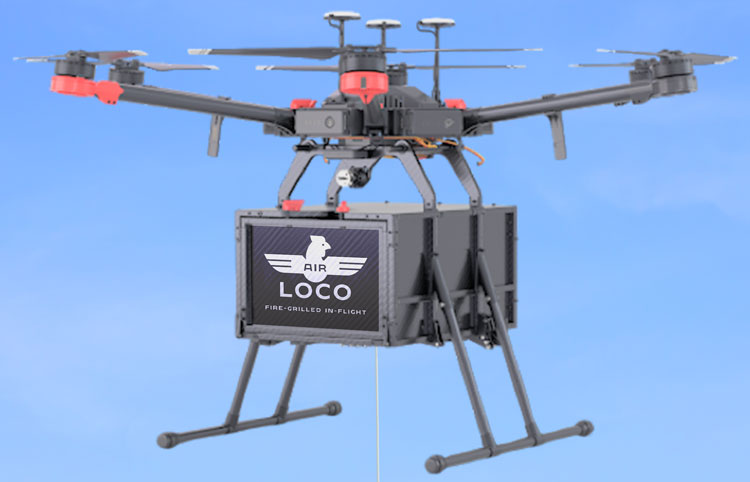El Pollo Loco is set to be the first quick-service restaurant to test drone delivery in the U.S. The “LA Mex” brand will test the capabilities in 10 Southern California locations. It’s partnered with drone operator Flytrex to do the flying, which also helped 7-Eleven with its own drone test.
One early learning was around packaging that will hold up against not sitting in a climate-controlled car but flying through the air in what is essentially a box with propellers. That meant higher-grade packaging, and El Pollo Loco announced new Thermo-to-Go packaging for drone and traditional delivery.
Andy Rebhun, the company’s vice president of digital, is hard at work with the rollout, but took some time to walk Food On Demand through the details of its drone testing.
What do you see as the biggest opportunity in drone delivery?
I believe drone delivery is one of the more sustainable and cost-effective mechanisms for food delivery in the future. I believe there will be a bifurcated delivery model in the future where businesses will choose to operate in the most efficient and margin-positive mechanism.
What does it take operationally in the restaurant to do a drone delivery?
There are no material changes to the way we are providing delivery. A member of our restaurant team will provide food in our Thermo-to-Go packaging and tamper-proof sealed delivery bag to the drone operator. Our Air Loco drone will then be deployed to a customer’s front yard or back yard and lowered for landing.
How did you develop a procedure for working with a drone?
We are working closely with our drone delivery fulfillment partner Flytrex to establish best practices prior to launch and adapting them as the test progresses.
What limitations do you see in the test, and how are you working around those?
Initially, there will be distance limitations with drone delivery. We are keeping a bifurcated model in place to be able to serve our Fire-Grilled Chicken up to eight miles from our restaurant locations.
What do order times look like?
On average it will take roughly 10 to 12 minutes via Flytrex. Our current delivery times via third-party delivery are between 36-40 minutes.
What do the fees look like for delivery on the consumer side?
We have yet to unlock what fees for the consumer will look like, but it will be comparable to that of traditional delivery.
What do the costs look like on the restaurant side—and how might that change with scale?
We anticipate we may be able to decrease delivery costs by as much as 30 percent, but El Pollo Loco’s drone delivery is a test program at this time. We look forward to learning more about drone delivery and its cost implications for the consumers during this test.
How are you quantifying this launch or what KPIs will you be tracking to measure success?
We will be looking at overall delivery time, cost efficiency/ business margin, operational implications and customer demand.
How are you looking at the future here?
After the test, we hope to scale this delivery option into new locations based on test results, market demand and FAA regulations.
What stood out as especially important to you?
We are incredibly pleased to be the first QSR to test door-to-backyard drone delivery. We wanted to lead the way in the industry and be the first to deliver a memorable experience to our customers in a cost-efficient, fun, and reliable fashion in a way no restaurant brand had previously attempted.


